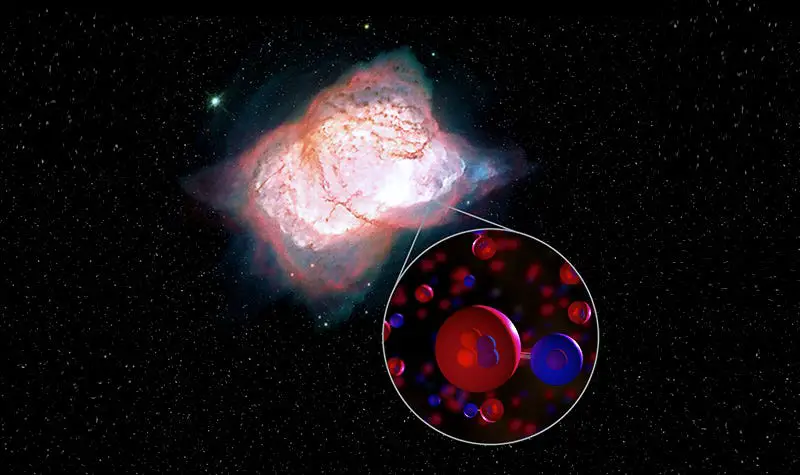Key Takeaways
- The universe’s first molecule, helium hydride, was formed shortly after the Big Bang.
- NASA’s SOFIA telescope recently detected helium hydride in the planetary nebula NGC 7027.
- This discovery supports theories about the chemistry of the early universe.
- SOFIA’s recent upgrade allowed astronomers to finally locate helium hydride after decades of searching.
- Finding helium hydride confirms scientists’ understanding of early atomic interactions after the Big Bang.
__________
First molecule ever formed in the universe, helium hydride, detected 3,000 light-years away.

The Universe’s First Molecule: Helium Hydride
In the wake of the Big Bang, the universe was a vastly different place: hot, dense, and filled primarily with hydrogen and helium atoms. During this primordial era, hydrogen and helium collided to form helium hydride, the first molecule ever created in the universe. Scientists have long hypothesized its existence, believing that its formation marked the beginning of the universe’s chemical evolution. However, despite decades of effort, researchers struggled to confirm helium hydride’s presence in space.
Now, for the first time, astronomers have found this elusive molecule. NASA’s Stratospheric Observatory for Infrared Astronomy (SOFIA)—an airborne telescope mounted on a Boeing 747—made the historic detection. This significant discovery occurred in the planetary nebula NGC 7027, a gas and dust cloud surrounding a dying star located about 3,000 light-years away from Earth. The research findings were published in the prestigious journal Nature.
Rolf Guesten, the study’s lead author, expressed excitement about seeing helium hydride in the data, describing it as a “happy ending” to a prolonged search that eliminates previous doubts about early-universe chemistry. With this detection, scientists have gathered essential evidence supporting theories on the universe’s initial stages of molecular formation.
Decades-Long Search Made Possible with Advanced Technology
The hunt for helium hydride began nearly 40 years ago when astronomers first suggested that it might be hiding in the dense chemical environment of NGC 7027. However, the complexity of the nebula made isolating helium hydride nearly impossible. The game changed when SOFIA’s telescope received the German GREAT (German Receiver at Terahertz Frequencies) upgrade. This enhancement enabled SOFIA to observe the nebula at precise frequencies and, ultimately, detect helium hydride.
Harold Yorke, director of the SOFIA Science Center, praised SOFIA’s ability to pinpoint helium hydride, explaining that the combination of the right instruments and the right positioning was key to locating the elusive molecule. This achievement demonstrates how SOFIA’s specialized equipment can reveal hidden details about the universe.
Confirming the existence of helium hydride is a landmark discovery for scientists studying the early universe. Without this molecule’s detection, scientists would have been forced to reconsider existing theories of how atoms and molecules interacted in the moments after the Big Bang. Now, with this find, astronomers can continue studying early cosmic chemistry with confidence.
This breakthrough solves a long-standing cosmic mystery and reaffirms current understandings of the universe’s origins. With more discoveries like this, SOFIA continues to prove its worth as a vital tool for space exploration, offering valuable insights into the composition of the cosmos.





login situs slot gacor terpercaya sekarang juga hanya di username situs yang sudah kami berikan,